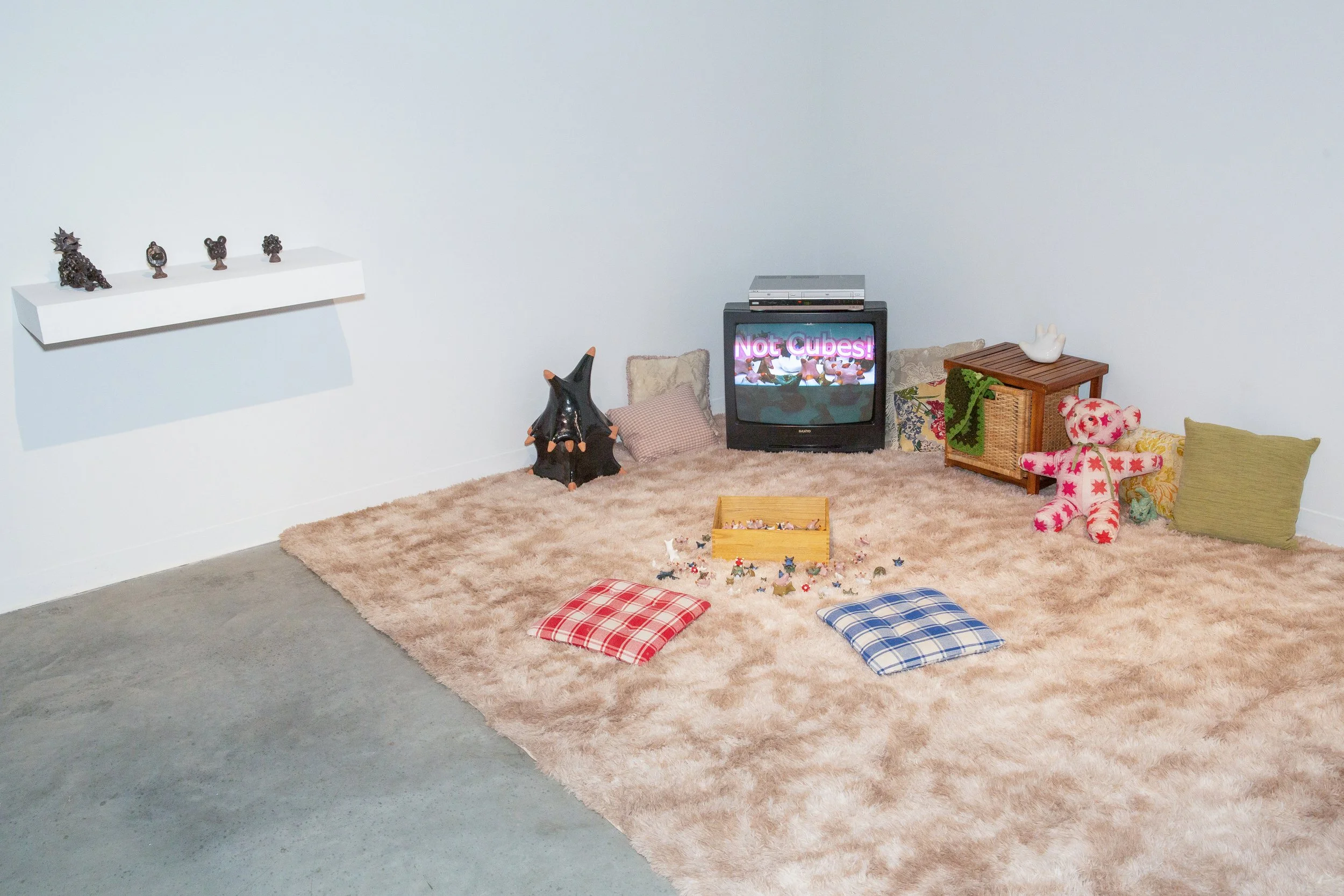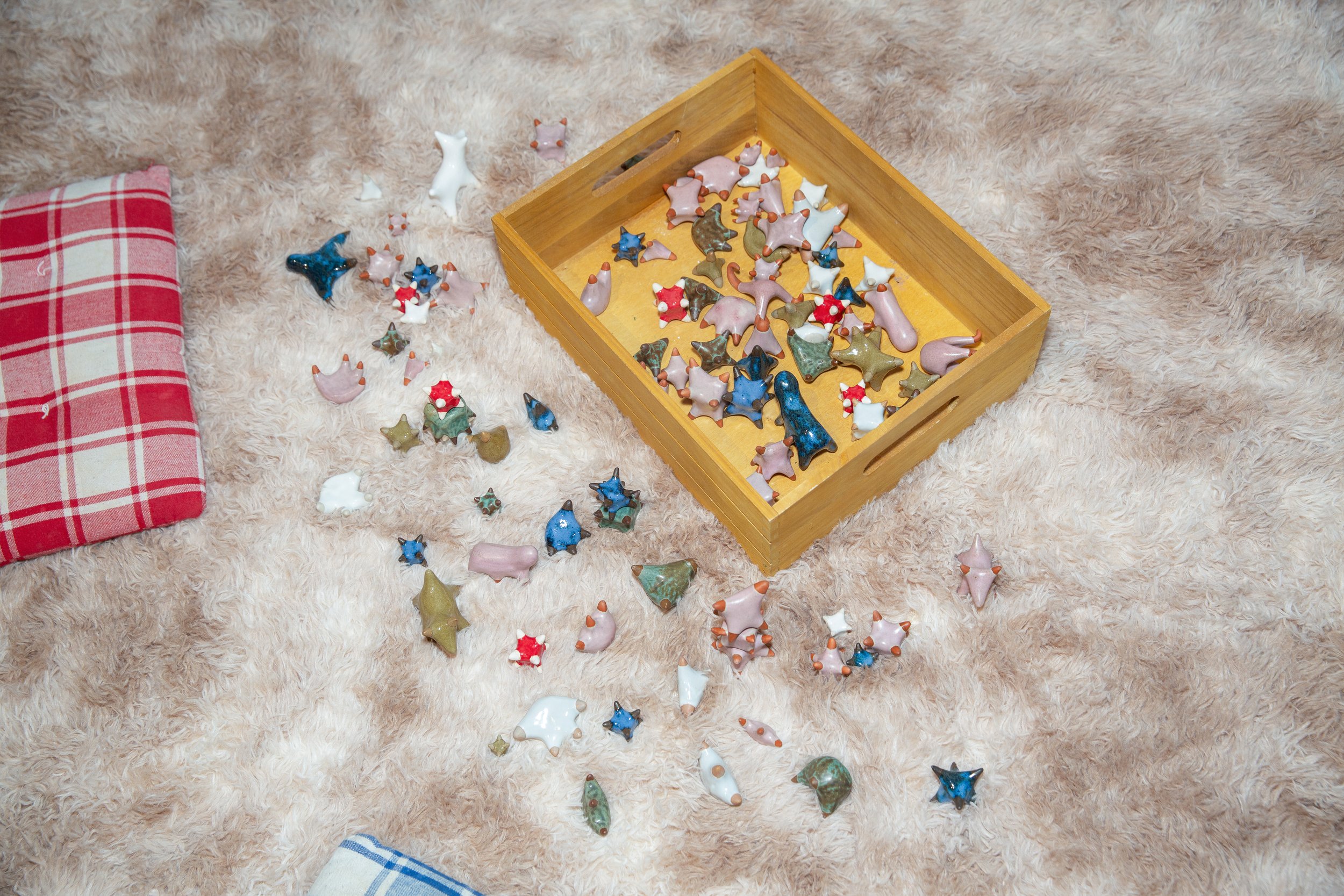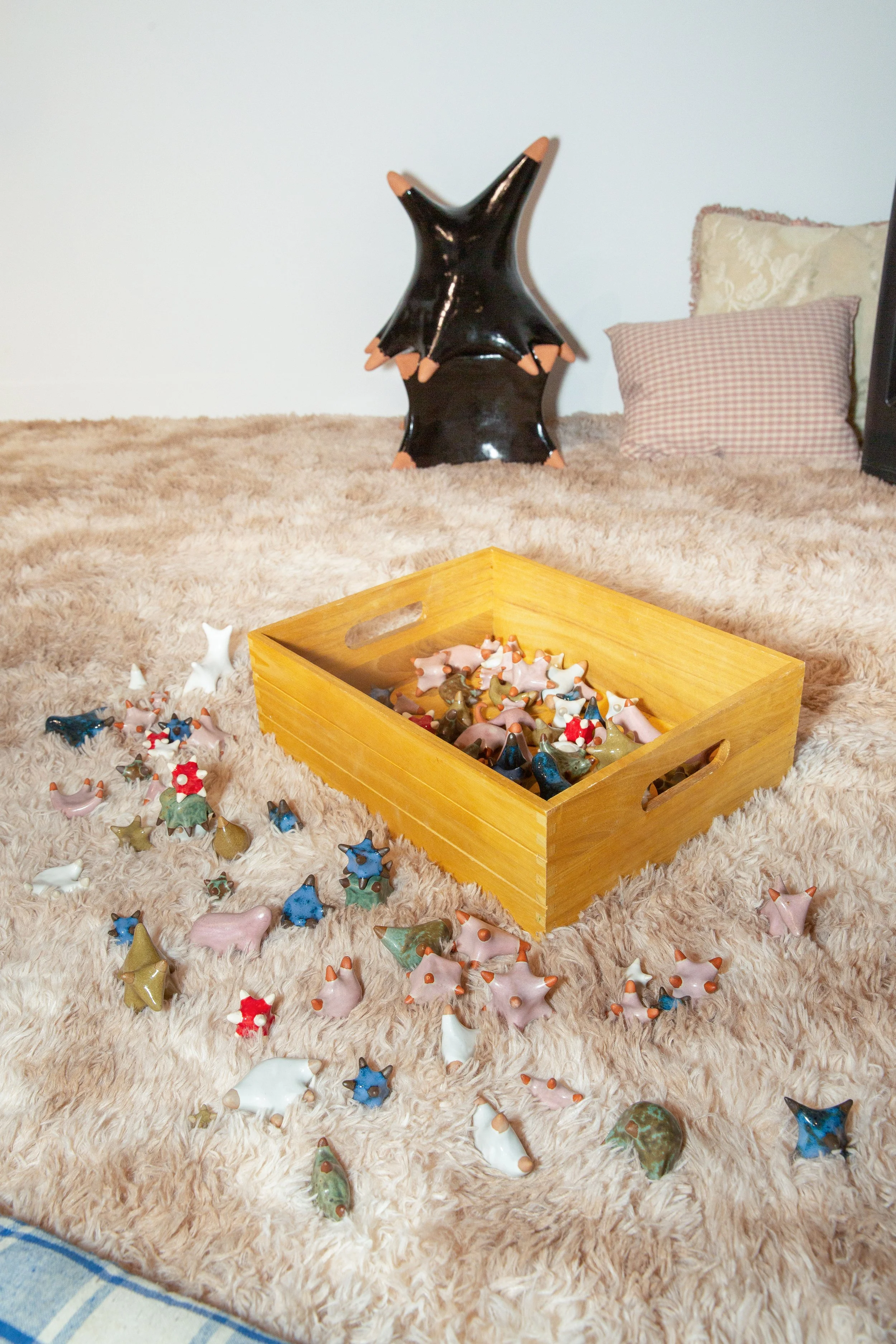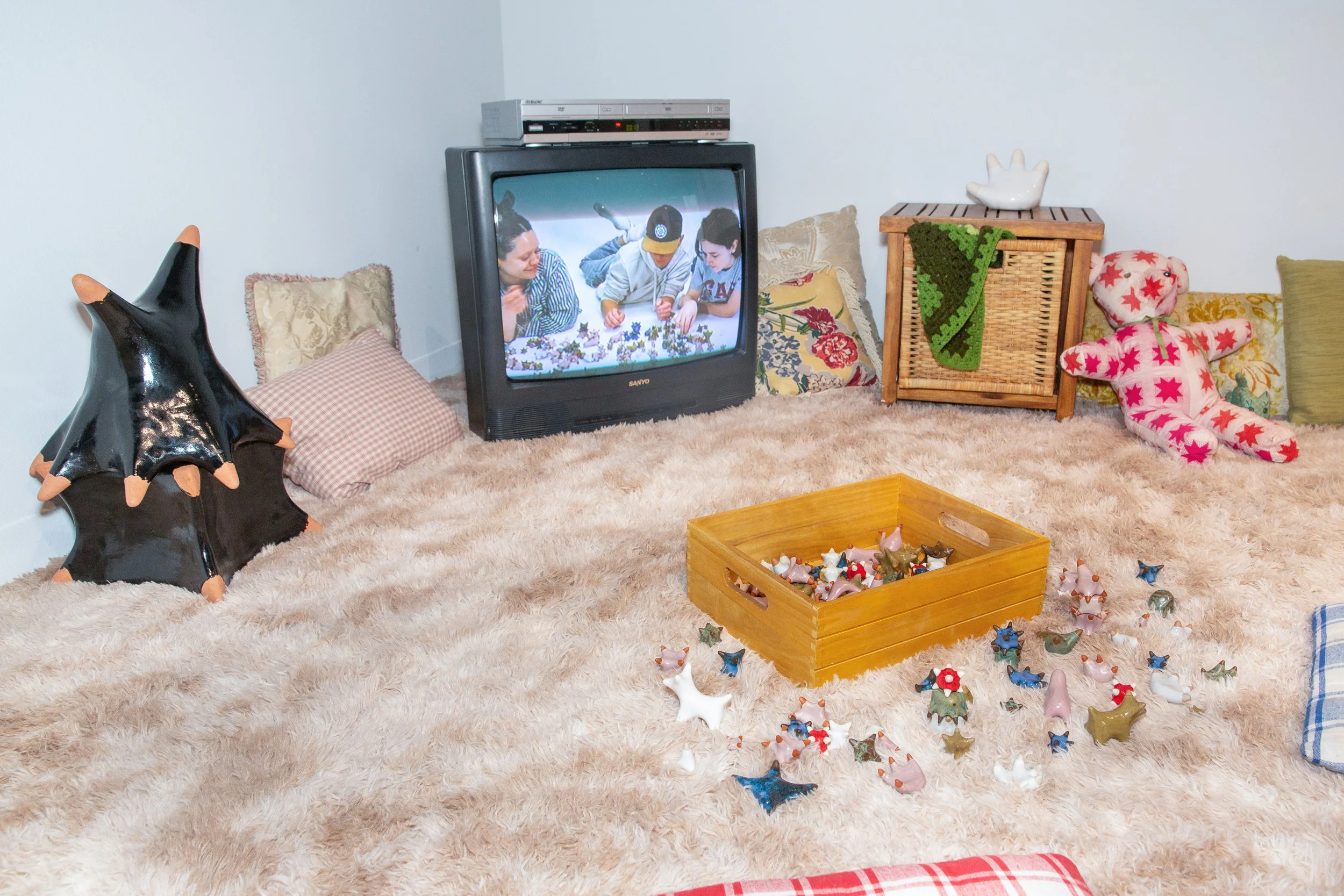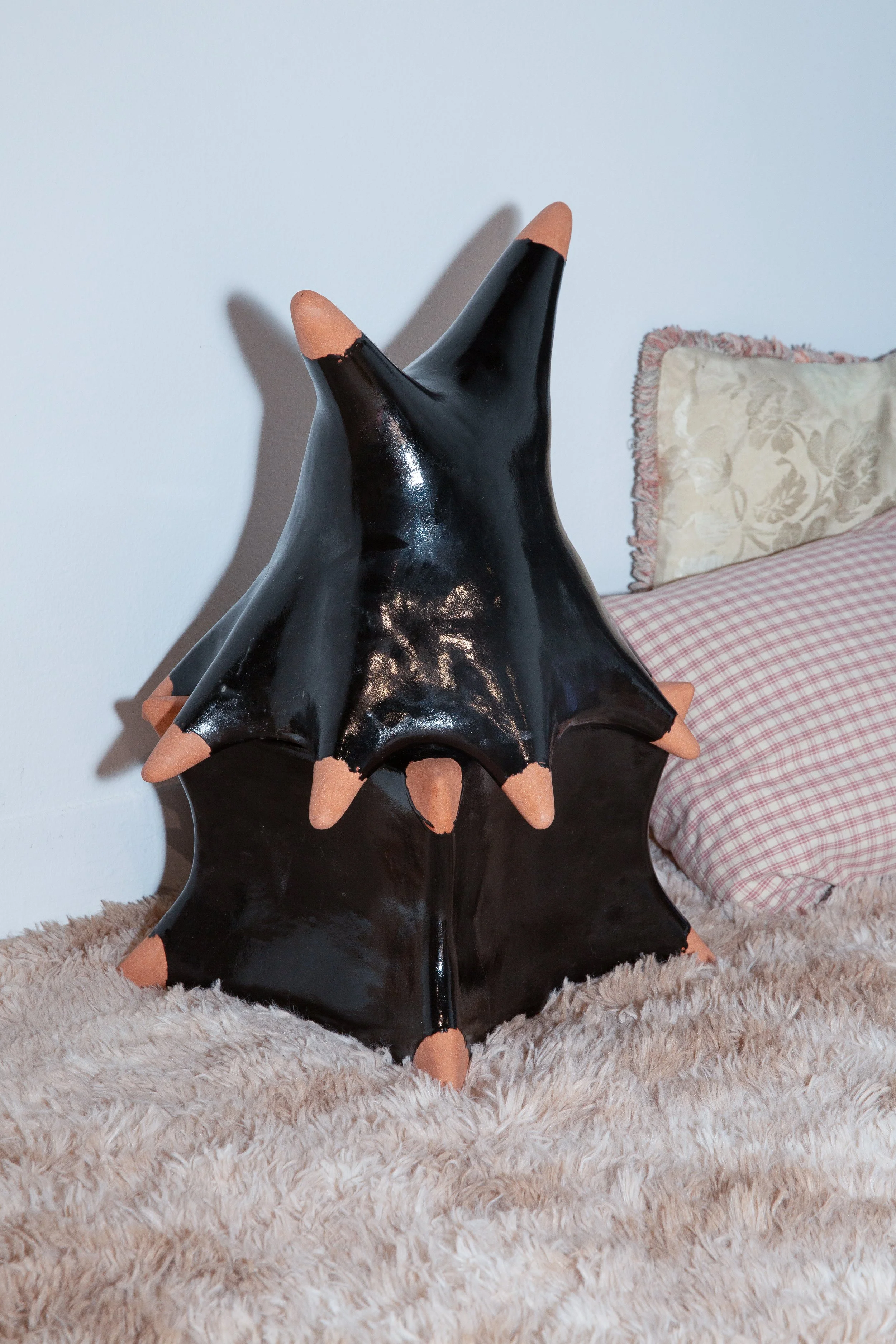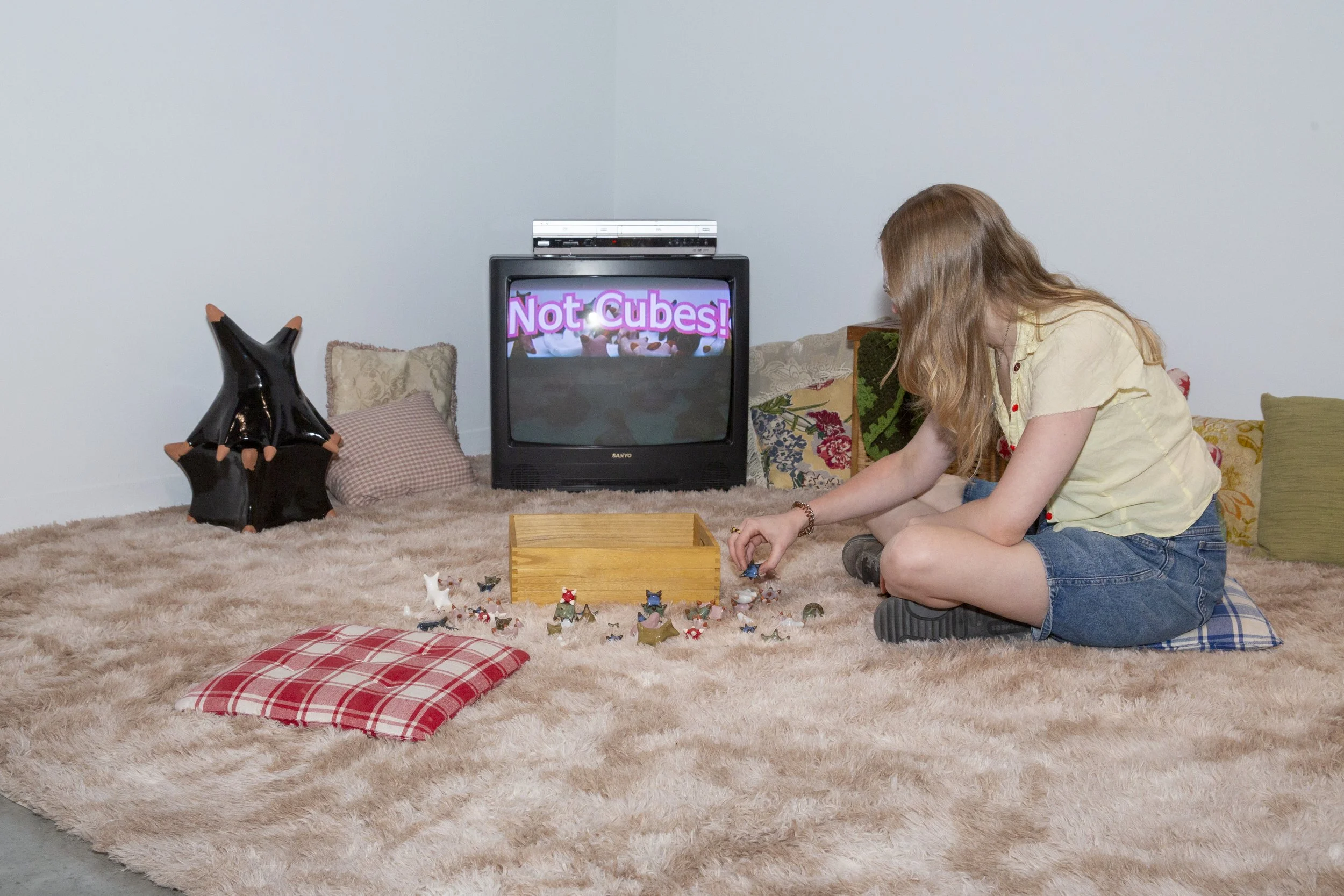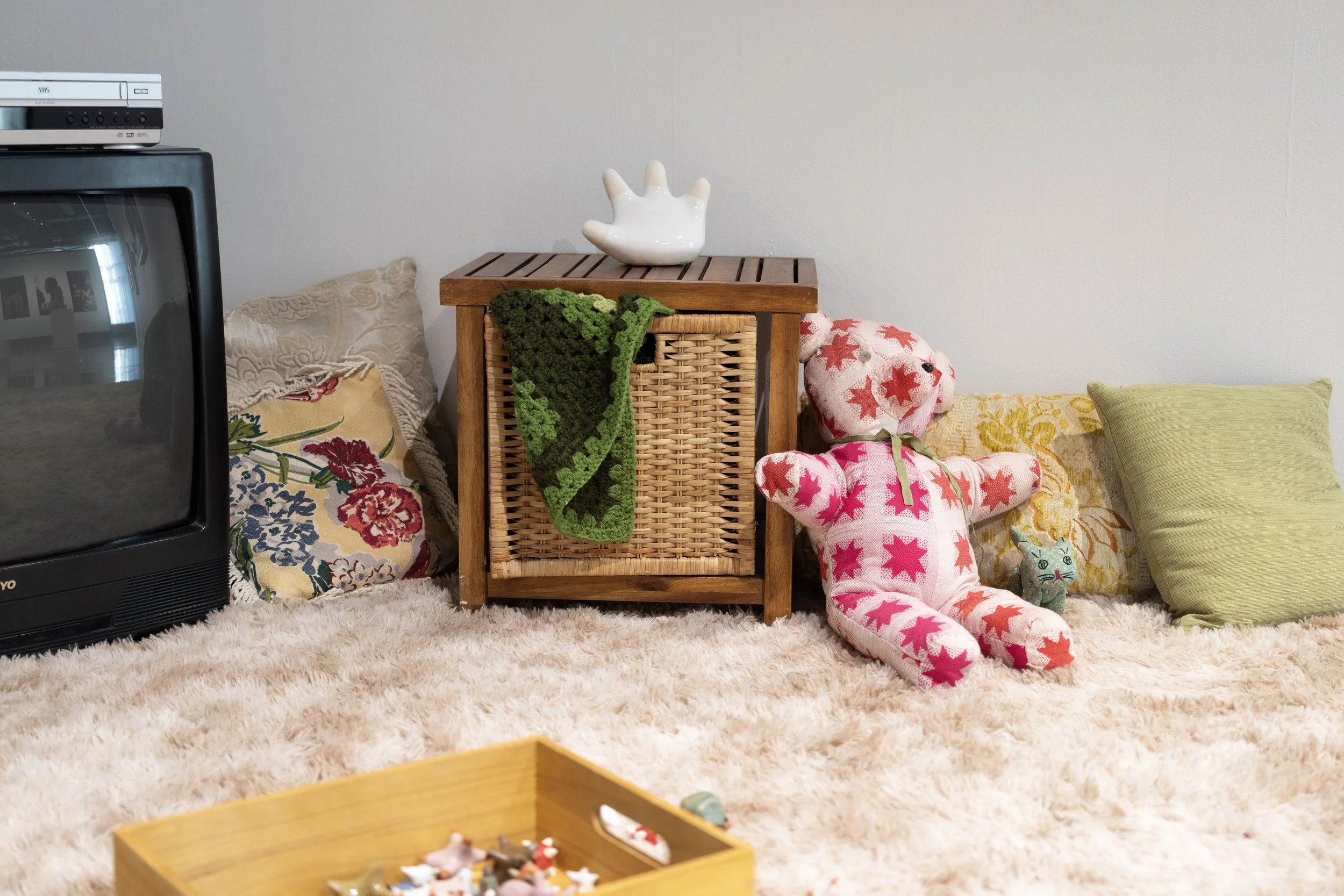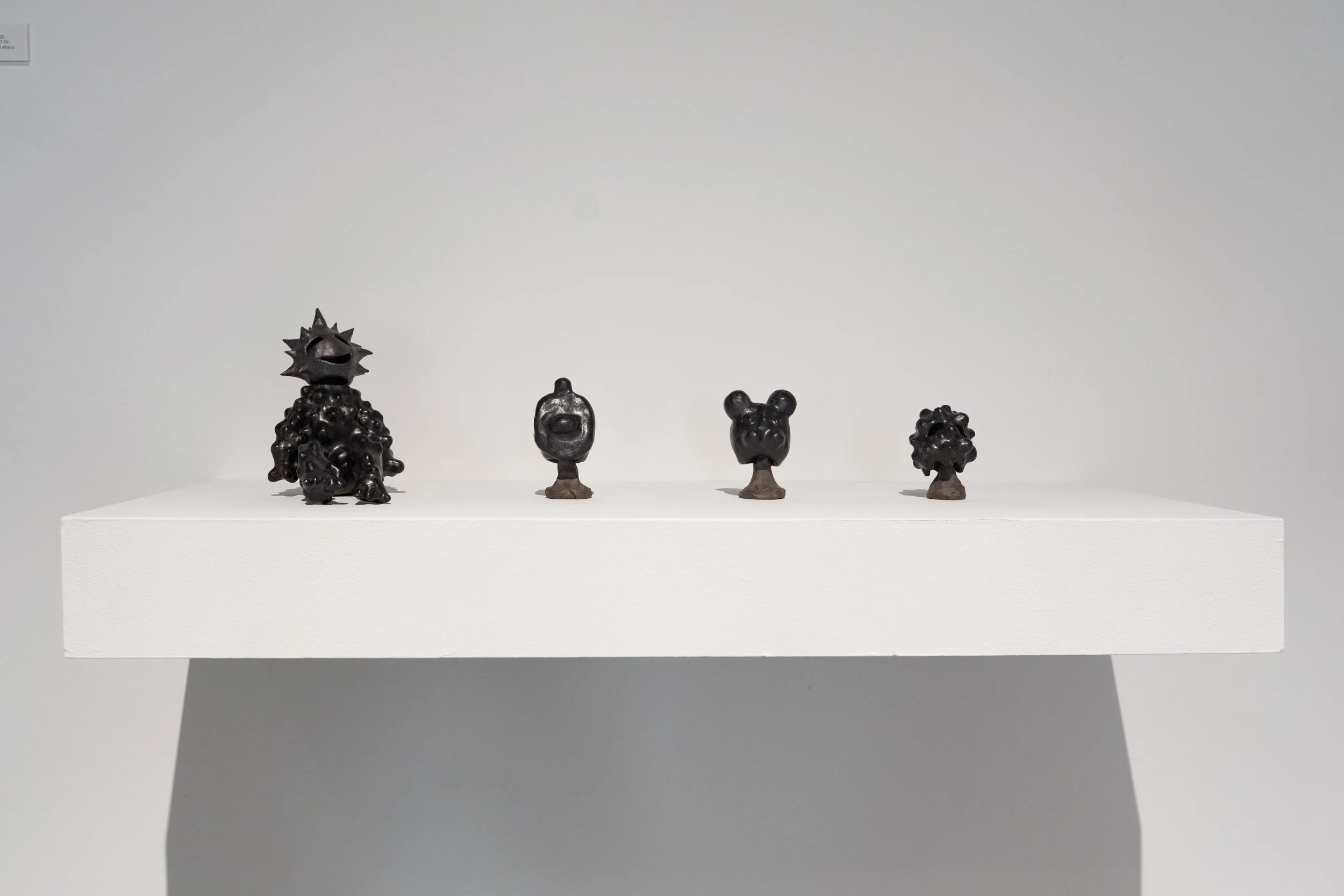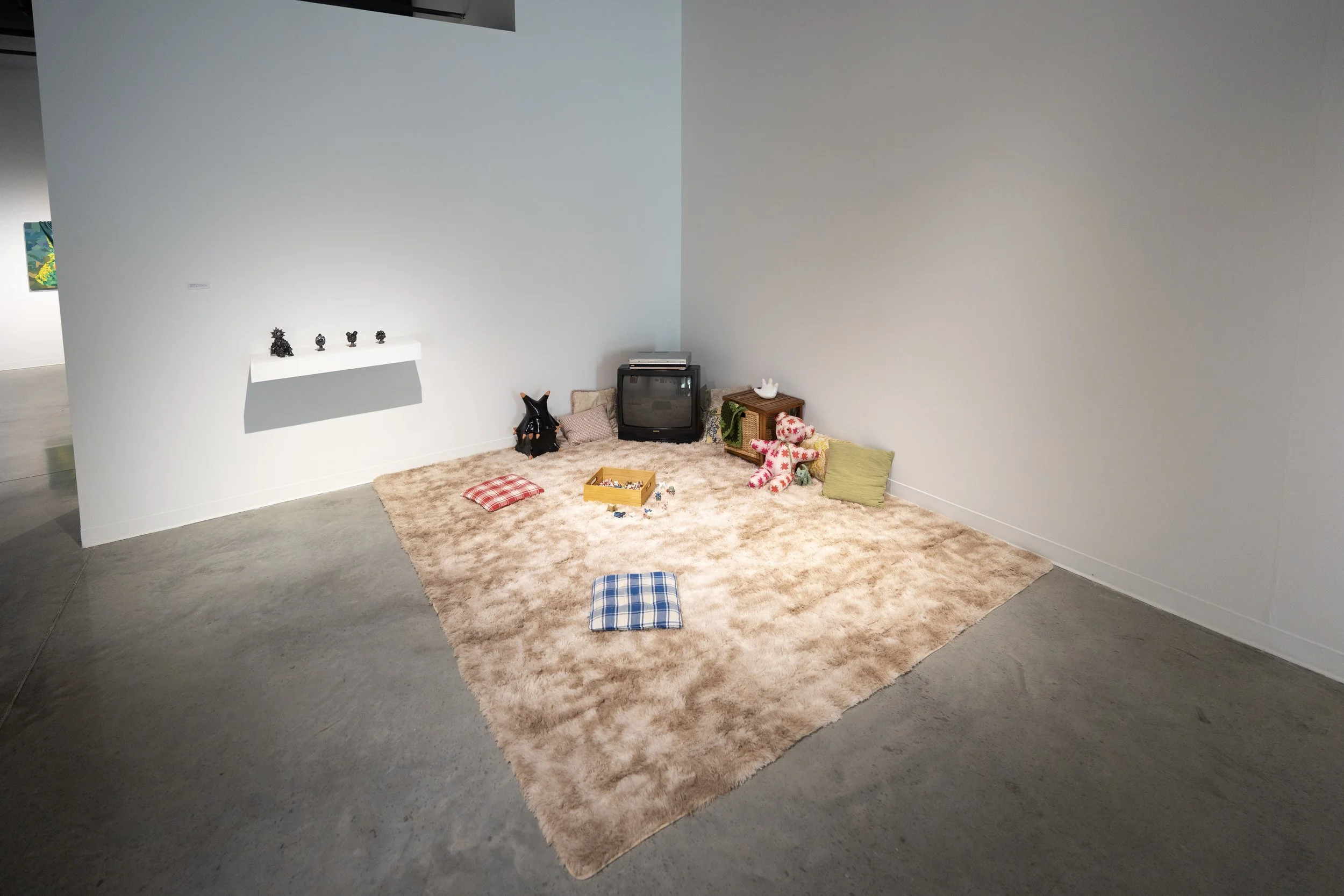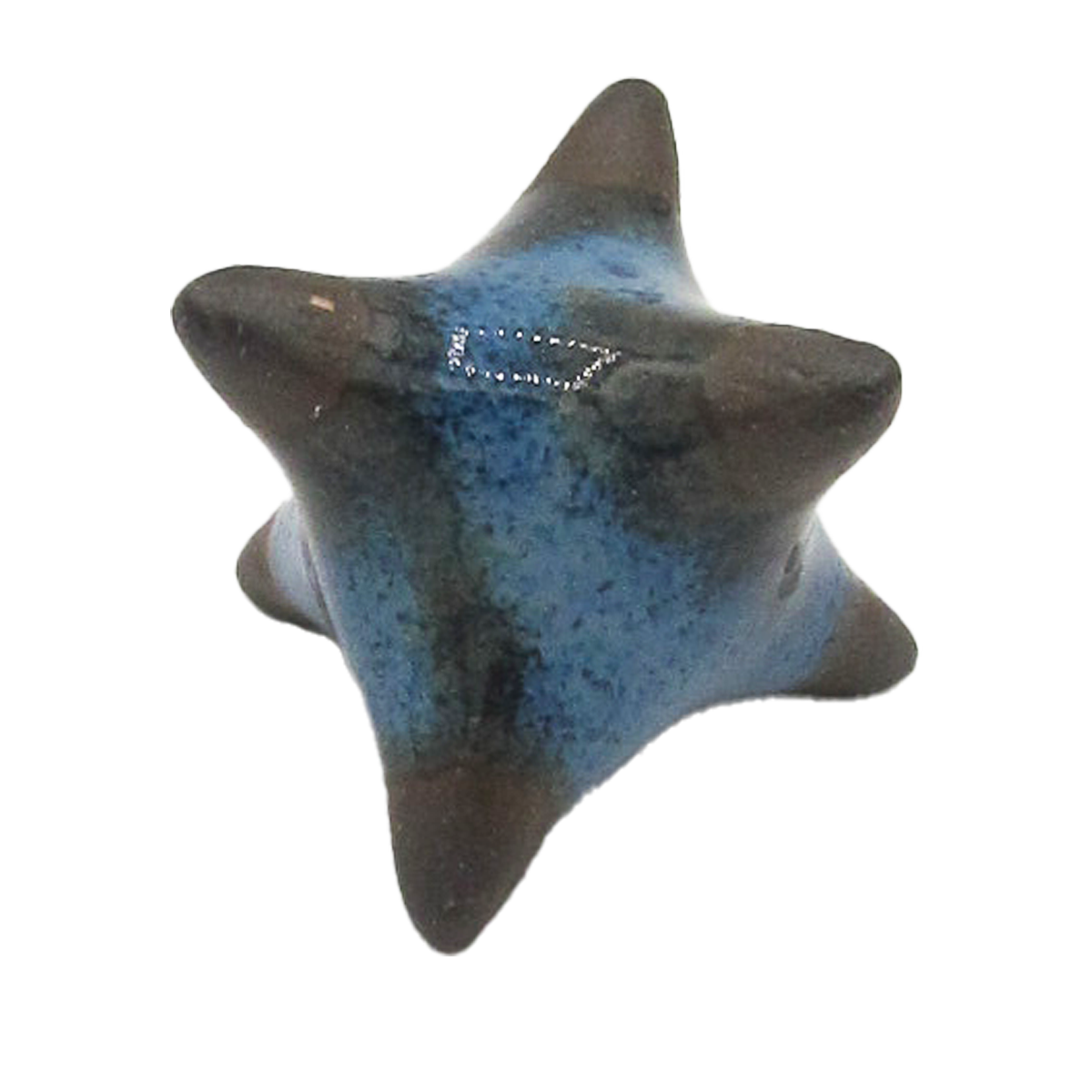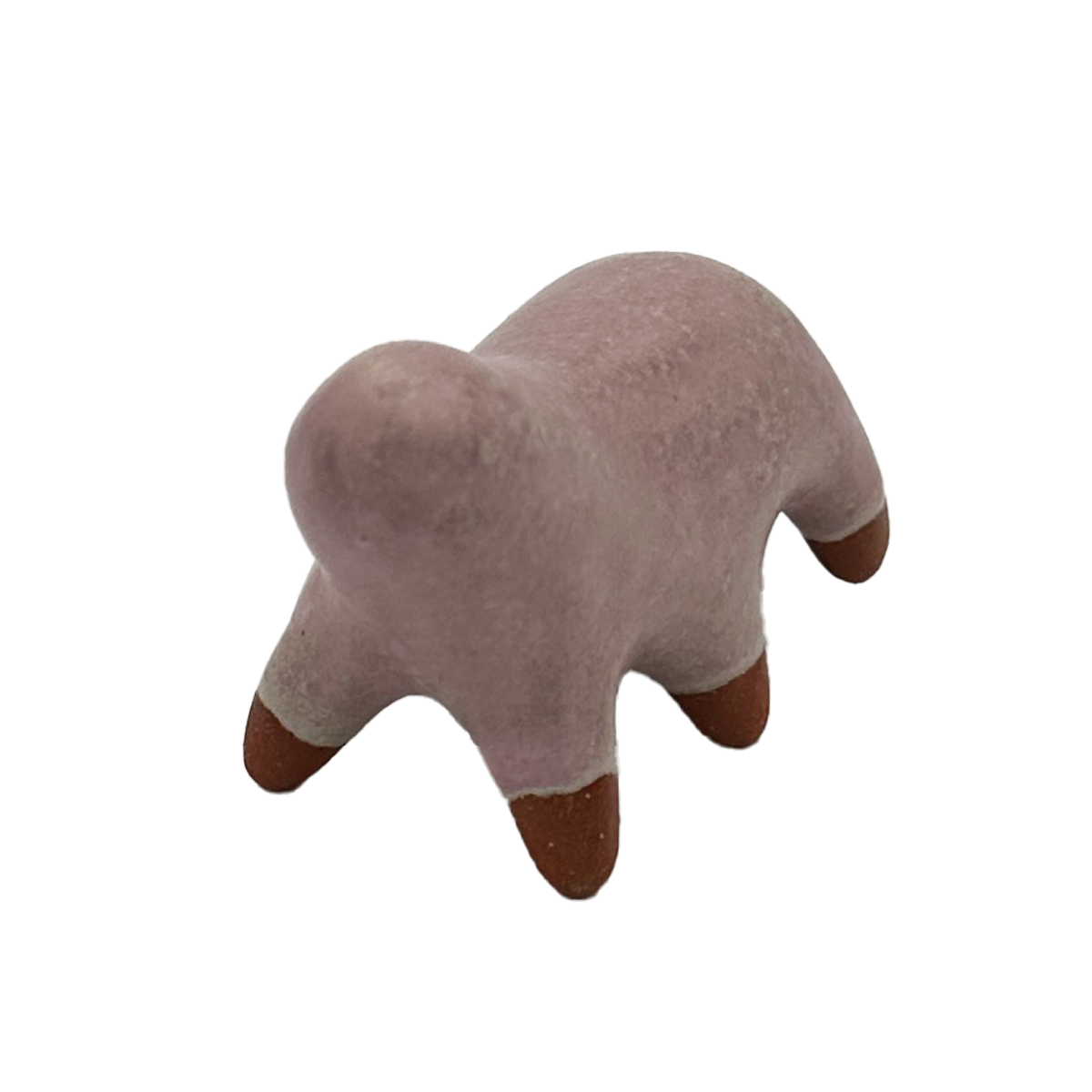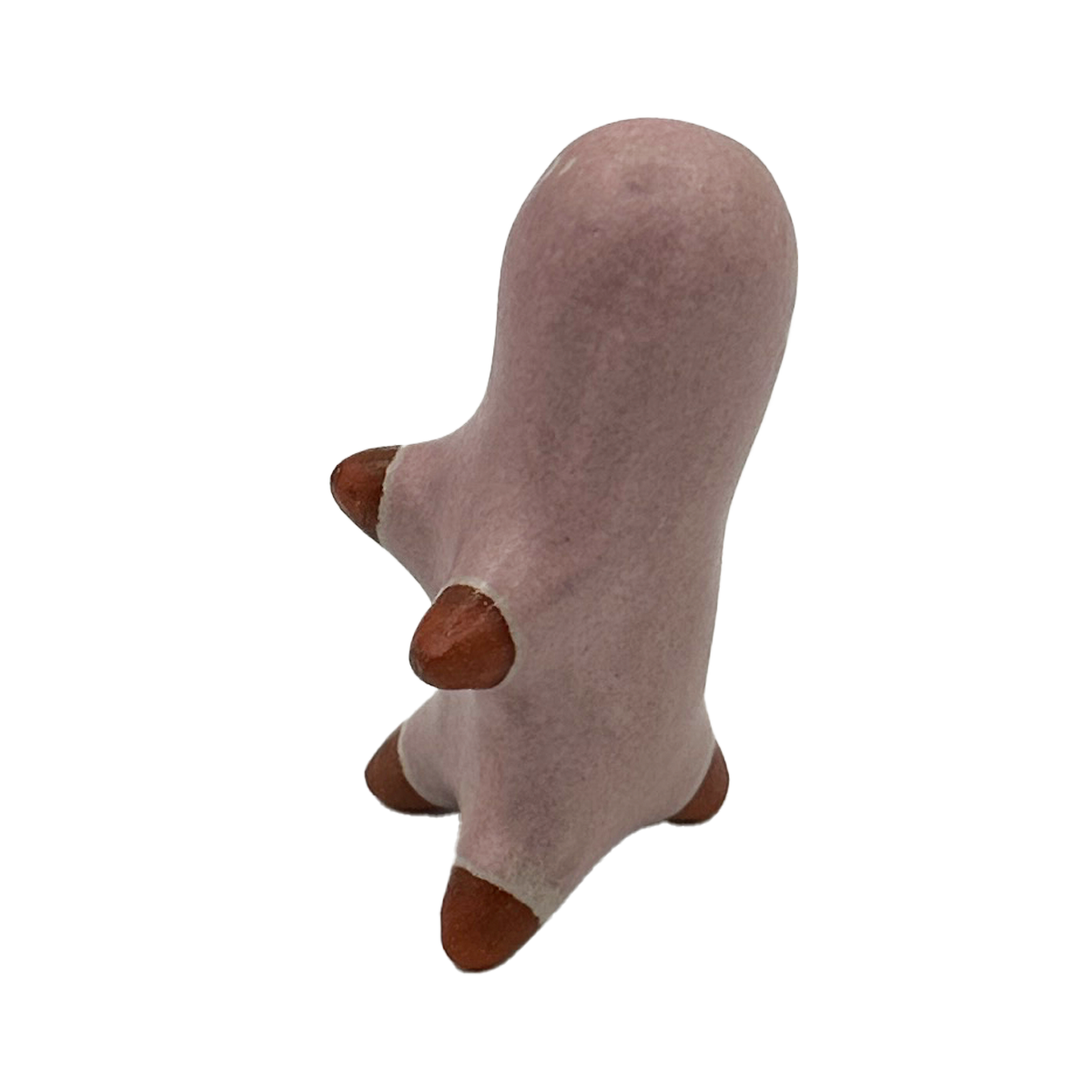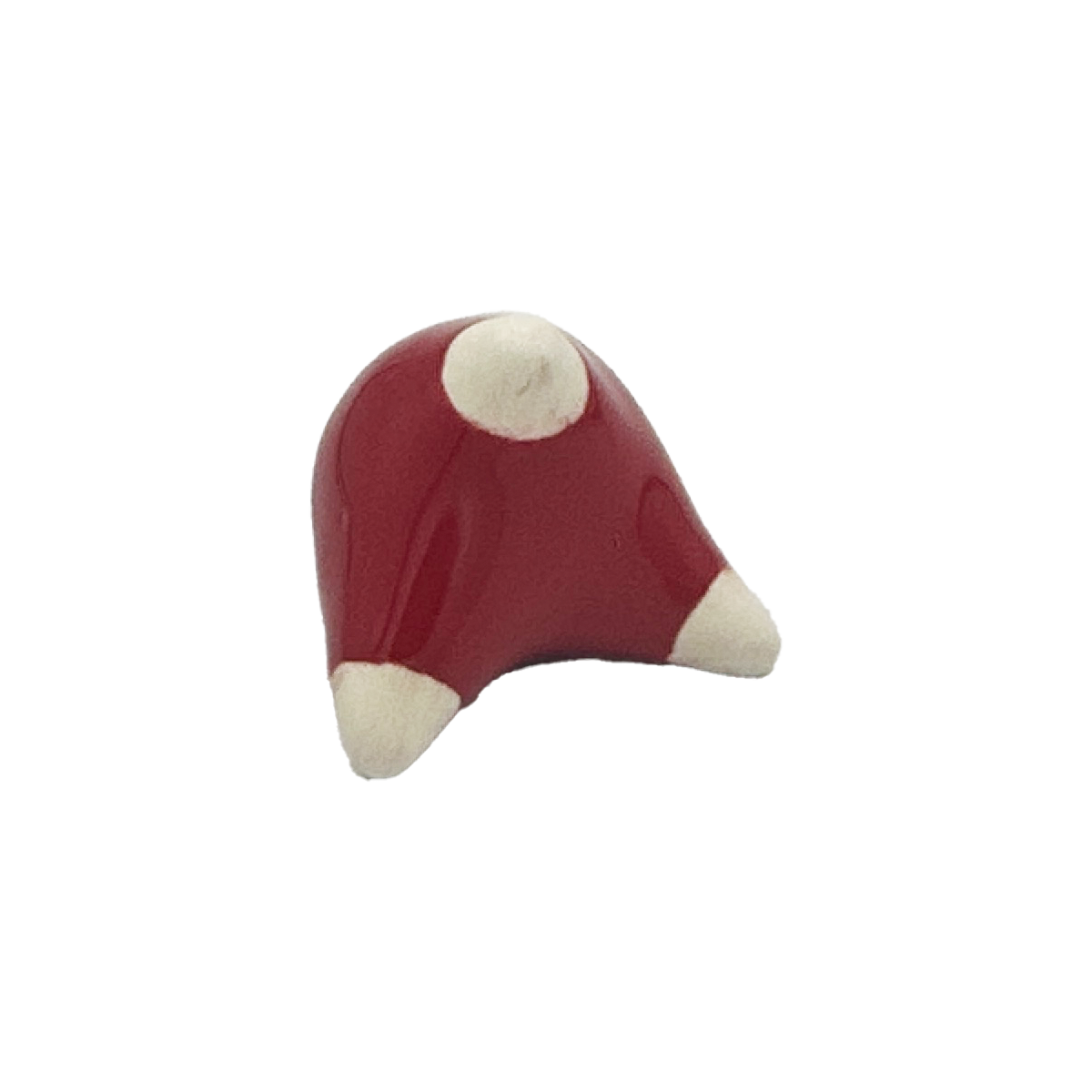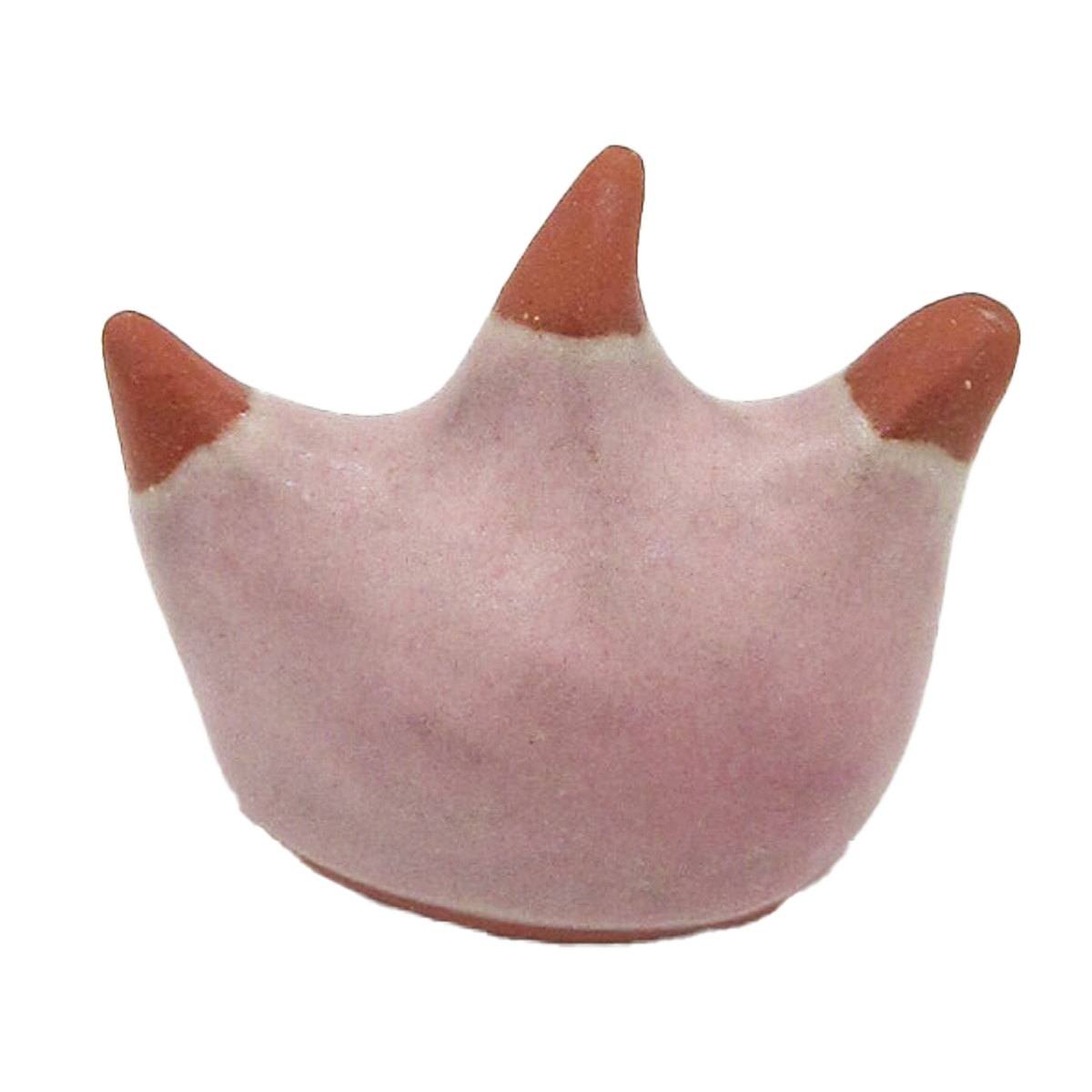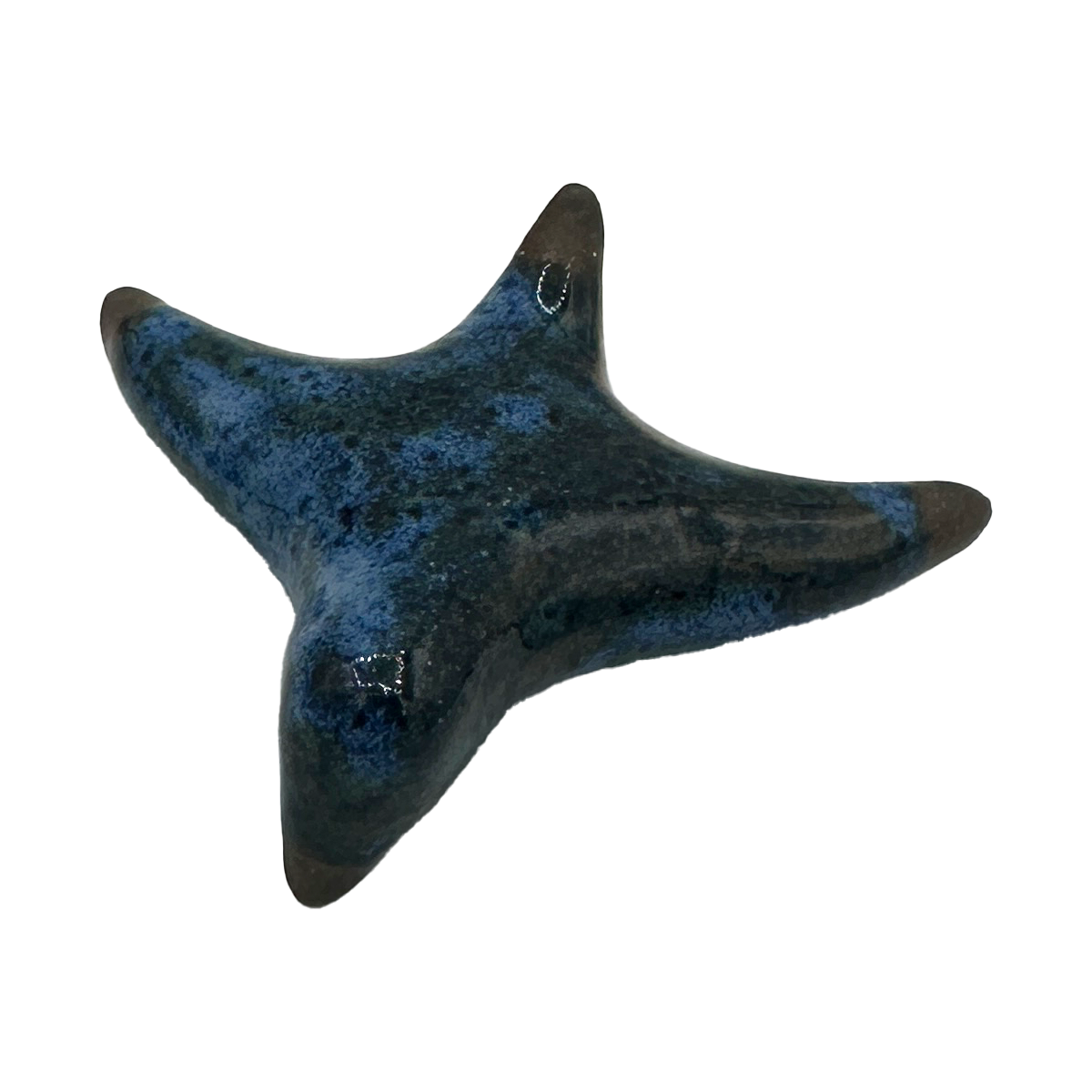Regularly Scheduled Programming, Featuring Cubes and Not Cubes and Mama Bear, 2025, Low-fire, Midrange and High-fire Ceramic, Sanyo CRT TV, Found Objects
Do you think about the hands that touch your products before you buy them?
How many were there?
Who are they?
This installation quietly urges viewers to consider the use of their hands. In a world of increasing automation and detachment from the handmade, Regularly Scheduled Programming re-centers the hand as a tool for work, play, and connection. Most gallery experiences demand distance—look, but don’t touch. This installation invites proximity and participation, a form of engagement that emerges not through instruction but implication.
The installation never specifically states that the work is free to touch and play with, but there are hints sprinkled throughout. The advertisement playing on the TV serves many purposes, but one is to provide context to the ceramic work in a playful manner, in which they could mimic. The rug, the pillow, the ceramic forms—are each placed with deliberate casualness, playtime cut short. The viewer becomes part of this narrative simply by sitting, touching, and rearranging. This isn’t a static installation—it is an active scene of ongoing.
Around the corner, the Cube Machine continues this invitation. For 50 cents, visitors can take a small ceramic object home—an art object disguised as a toy, or a toy disguised as art. The vending machine—a symbol of mass production—yet what it dispenses are deeply personal, hand-formed objects. This installation is curated, almost single-handedly, by one artist, one set of hands. Over 200 cubes were made, each cube pinched, shaped, wiped, fired, and packaged with care and intention. The repetition is not industrial—it’s habitual. A small, hands-on act that pushes back against the sameness of mass production. The surrounding found objects nod to commercialization, yet they frame and contrast the ceramic works, which feel unmistakably human. The juxtaposition highlights the contrast between mass production and the handmade, between disposability and the sacredness of time spent making.
Throughout my practice, I center play as a form of inquiry. I create spaces where audiences can interact without instruction, without pressure—spaces where curiosity leads and outcomes are open-ended. My ceramic forms are ambiguous on purpose: soft-edged, brightly glazed, and open to interpretation.
In a world where interaction is increasingly digital and consumption increasingly passive, my work asks:
What if art was something you played with?
What if value came from touch, from time, from joy?
What if you sat down on the rug and stayed a while?

